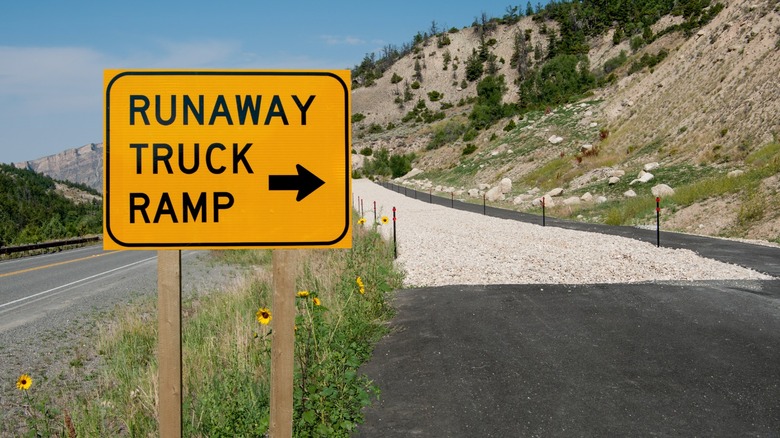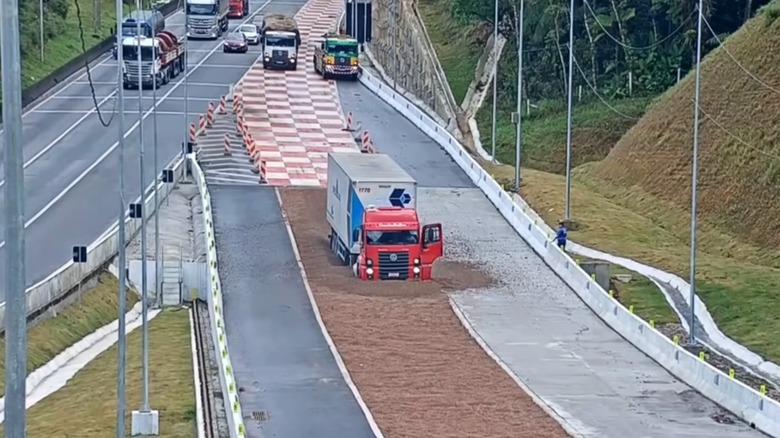What Is A Runaway Truck Ramp And How Does It Work?
If you've spent any time traveling on highways in the United States, chances are that you've seen those strange-looking ramps off to the side of the road near large hills and steep inclines. They're called runaway truck ramps, and they're designed to prevent extremely severe accidents in the event of brake failure. But who exactly are these ramps designed to protect, and how do they work?
First of all, runaway truck ramps are designed primarily for long-haul semi-truck drivers, although passenger vehicle drivers are free to use them, too. Massive street-legal trucks, 18-wheelers, and other large commercial vehicles are extremely heavy by themselves. Factor in the loads that these vehicles carry, and the weight can climb up to around 80,000 pounds. That's a lot of weight to slow down under the best circumstances. However, considering that brake problems are relatively common for these big rigs and account for nearly 30% of large truck accidents, slowing these vehicles down is not only difficult but also dangerous.
It's for that reason that local governments choose to install runaway truck ramps on extremely steep roads. If a big rig experiences brake failure while driving down a steep decline, there isn't much the driver can do to stop the truck. Runaway truck ramps are designed to counter the rig's speed by creating an incline in the opposite direction, forcing the vehicle to travel uphill until its momentum stops. Other ramps use heavy and thick materials to create friction and prevent the wheels from turning easily, while various others utilize a combination of deep material and an incline. Let's go ahead and dive in and explore runaway truck ramps in greater detail.
How does a runaway truck ramp work?
Most runaway truck ramps work using a combination of gravity and friction. Usually, that translates to a steep incline coupled with layers of heavy, thick material like sand or gravel. Runaway ramps typically branch off of the main road, similar to off/on ramps, and can commonly be found near the base of a steep incline in hilly or mountainous areas. They tend to be several hundred yards long, and large yellow signs typically advertise the presence of runaway ramps in advance so that drivers have time to prepare if their brakes fail.
Ramps that rely on gravity are usually extremely steep. As the truck travels uphill on the ramp, it loses momentum, which helps it slow down. However, most ramps use a combination of gravity and friction. The friction comes from a deep layer of material like sand or gravel. The heavy trucks sink into the softer material, which creates large amounts of friction as the wheels turn. The combination of that friction with gravity helps slow down and stop extremely-heavy and fast-moving vehicles. The thick material also helps prevent the trucks from rolling backward into traffic after they've come to a stop.
While most runaway truck ramps use friction and gravity, others rely on advanced contraptions, like cables or netting. However, these systems are significantly more expensive and difficult to maintain, and most highways feature the tried and true style of runaway ramp described above.

